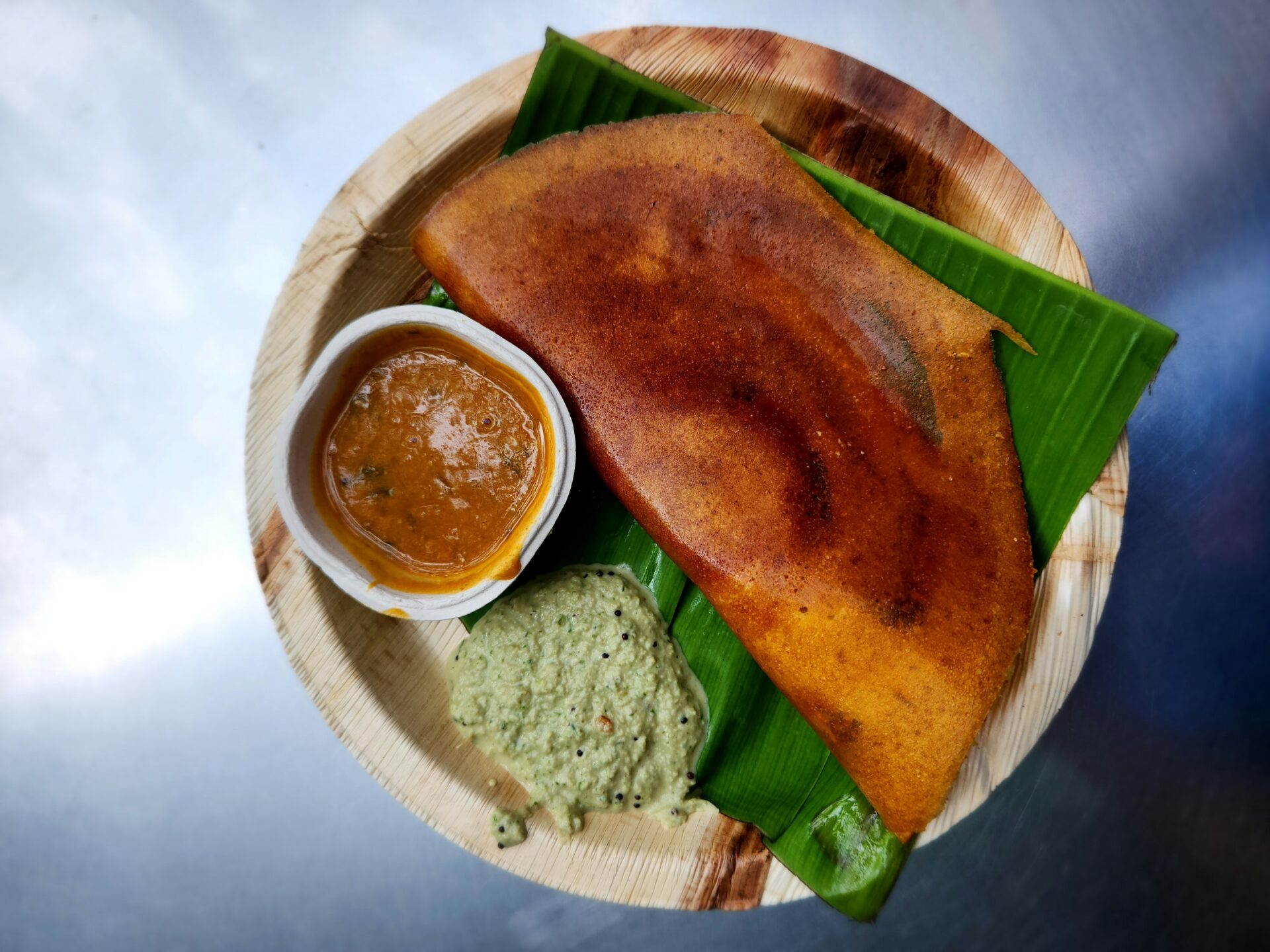This is a recipe for a typical Dosae, a fermented rice and lentil crepe from south India. This recipe includes instructions to make the batter and the dosae themselves. This is a dish that generates a lot of debate at home. Do you like the Dosae crispy, or soft and fluffy? Do you have to dunk it in Sambar, or is that just a sheer waste of a perfectly crispy dosae? Regardless, serve Dosae with your favorite combination of coconut chutney, chutney powder, or sambar.
Dosae
Ingredients
- 1 cup Urad dal
- 3 cup Rice flour
- 1 tsp Methi seeds
- 1/4 cup Poha
- 1 tsp Salt to taste
Equipment
- High powered blender – such as a Vitamix
- Non stick tava or flat griddle
- Ladle with a rounded cup – such as a soup ladle
- Flat spatula
Instructions
To make Dosae batter
- Transfer the urad dal, poha, and methi seeds to a bowl and cover with water. Set aside for a minimum of 5 hours.
- Once the urad dal is fully soaked, drain the water from the dal. Reserve this extra soaking liquid.
- Transfer the urad dal to a high powered blender and make a smooth, fluffy paste using water as needed. It is important to only add a little water at a time to get a nice fluffy texture. Use the reserved water from soaking the dal first. Remember that you can always dilute the batter later if it is too thick, but cannot fix a batter that is too thin easily.
- Empty the contents of the blender to another large bowl or other container such as a dutch oven.
- Add the rice flour to the urad dal paste.
- Add salt to the batter and mix well. Dilute the batter with water until you have a pourable batter.
- Check the salt by tasting a drop of the batter. You should be able to tell that there is salt in the batter.
- Cover and ferment the batter for up to 24 hours in a warm place.
- Once the batter has fermented and has increased in volume, stir it back down and transfer to an airtight container and refrigerate until ready to make the dosas.
- The batter can be stored in the fridge for up to a week, but it is best used within 2-3 days.
To make Dosae
- Heat a large flat non-stick tava (or griddle) on medium-low heat until a couple drops of water sprinkled onto the tava sizzles and evaporates instantly.
- Using a soup ladle or similar spoon with a cup like bottom, pour 1 to 1 1/2 ladles of batter onto the skillet and spread immediately with the bottom of the ladle into a thin crepe using a spiral motion. Be careful not to apply too much pressure, but you will need to work quickly as the batter will begin to cook as soon as it hits the hot surface.
- Spoon a half teaspoon of oil all over the dosae and allow to cook for about 2 minutes or until the edges begin to brown.
- Using a flat spatula, lift and flip the dosae. You can add a few more drops of oil to get a crisper texture and cook for another minute.
- Flip the dosae again and fold in half using the spatula. Transfer to a plate and serve immediately with coconut chutney, sambar, or potato neer palya.
Notes
- Making dosae requires practice and patience, and a good non-stick tava.
- If your dosae doesn’t spread, but seems to lift up as you spread, then your tava is too hot. Lower the heat for the next dosae by sprinkling a few drops of water on to the tava with your fingers and turning the heat down a bit.
- While restaurants like to serve dosae with sambar and multiple chutneys always, it is not always eaten this way in south India. You can skip making the sambar altogether and just serve with a chutney, chutney powder, or belladapaka, a syrup made with jaggery.
- Dosae must be served hot and cannot be made ahead of time and reheated. So if you are making these for a crowd, consider using more than one tava at a time.
- If you are using store bought dosae batter, you may skip straight to the section on making dosae.
- If your homemade batter does not show any signs of fermenting in the first 8 hours, try storing the container in an oven with the oven light turned on for a few hours.
- Alternately, you can mix a tiny pinch of instant yeast, or a half teaspoon of sourdough starter to the batter to kickstart fermenting.

